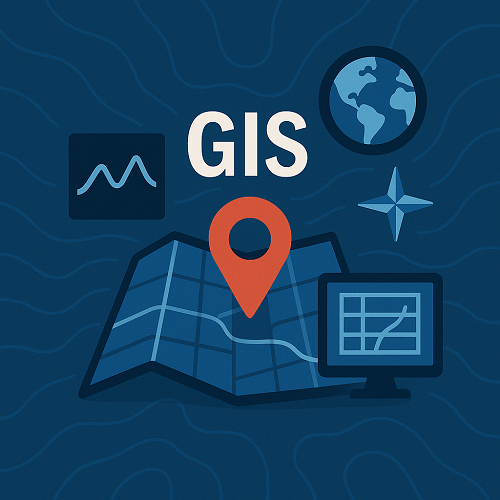TL;DR
- AI-driven GIS applications are transforming spatial analysis and forecasting capabilities.
- Integration with IoT devices enables real-time monitoring and decision-making.
- Open geospatial data initiatives are expanding accessibility and innovation opportunities.
- Blockchain is emerging as a secure way to manage and verify spatial transactions.
- Focus is shifting towards smart technology deployments for urban resilience and sustainability.
What’s new right now
Geospatial Information Systems (GIS) are experiencing a technological leap in 2025. AI integration allows for faster, more accurate spatial data processing, while IoT connectivity delivers real-time environmental monitoring. Major organizations such as Esri report significant advancements in predictive analytics. Global open data movements, supported by initiatives like Open Data Charter, are enabling broader access to high-quality geospatial datasets. Blockchain applications in GIS are being explored for secure land registry systems and supply chain mapping according to industry analyses from GIM International.
Why it matters
For businesses, these innovations mean competitive advantage through enhanced spatial intelligence, improved logistics, and better resource allocation. For technical stakeholders, AI and IoT open doors to unprecedented automation levels and data accuracy. Urban planners gain tools for designing resilient cities in the face of climate change, while policymakers can base decisions on real-time verified spatial data.
Deep Dive: Emerging GIS Technology Trends
1. AI-Powered Spatial Analysis
Artificial Intelligence is augmenting GIS by learning patterns from historical and real-time datasets, improving forecasting for phenomena such as traffic flow or flood risks.
2. IoT Integration
IoT sensors embedded in public infrastructure feed continuous geospatial streams into GIS platforms, enabling instant response to changing conditions.
3. Expanding Open Geospatial Data
Public agencies and private entities are increasingly releasing data under open licenses, catalyzing innovation in app development and community projects.
4. Blockchain for GIS Data Integrity
Blockchain ledgers ensure transparency and tamper-proof records for spatial transactions, providing trust in property rights and asset tracking.
Comparison Table: Traditional vs. Emerging GIS Approaches
| Aspect | Traditional GIS | Emerging GIS |
|---|---|---|
| Data Processing Speed | Batch processing, slower refresh cycles | Real-time streaming and AI-assisted analysis |
| Data Sources | Static datasets from periodic surveys | Continuous IoT sensor feeds and live satellite data |
| Security | Centralized systems vulnerable to single-point failure | Blockchain-based distributed verification |
| Accessibility | Restricted licenses, limited public access | Open data initiatives enabling broad user applications |
Mini Case Study: Smart Flood Management in Coastal City
Problem: A coastal city faced increasing flood risks due to extreme weather events and outdated infrastructure monitoring systems.
Approach: City planners integrated IoT-based water level sensors with AI-powered GIS platforms. The system analyzed incoming sensor data alongside meteorological forecasts, using blockchain for secure coordination between agencies.
Outcome: Response time to flood warnings improved by 45%, and infrastructure damage was reduced by 30% in the following storm season. Citizen engagement increased via open geospatial dashboards.
Implementation Checklist
- Assess current GIS capabilities and define organizational objectives.
- Select AI algorithms compatible with existing GIS software.
- Integrate IoT sensors and establish real-time data pipelines.
- Adopt open data standards for interoperability.
- Implement blockchain frameworks for sensitive spatial records.
- Train staff and stakeholders in using new analytical tools.
- Test systems rigorously in controlled environments before full deployment.
- Monitor performance and iterate based on feedback.
FAQs
How is AI changing GIS workflows?
AI automates pattern recognition and predictive analysis, reducing manual processing time and increasing accuracy.
Why integrate IoT with GIS?
IoT delivers real-time data streams that enhance situational awareness and operational efficiency.
What is open geospatial data?
Freely accessible spatial data released under licenses that allow use, modification, and sharing.
How does blockchain benefit GIS?
It ensures secure, transparent, and immutable records for transactions involving spatial data.
Can small businesses leverage these technologies?
Yes, open data and cloud-based GIS platforms lower entry costs and expand possibilities for SMEs.
What role does GIS play in urban resilience?
GIS helps identify vulnerabilities, plan mitigation strategies, and coordinate disaster response.
Conclusion
As we enter an era where AI, IoT, open data, and blockchain converge with GIS, the opportunities for smarter planning and improved resilience are unprecedented. Organizations that adapt quickly will lead in operational efficiency and innovation. To learn more or explore our GIS services, contact our team today.
